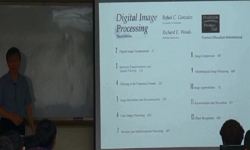For the detection of the impact location in a pipeline system, the correlation method has been the conventional method. For the application of the correlation method, the diameter of a duct should be small so that the acoustic wave inside the duct can...
http://chineseinput.net/에서 pinyin(병음)방식으로 중국어를 변환할 수 있습니다.
변환된 중국어를 복사하여 사용하시면 됩니다.
- 中文 을 입력하시려면 zhongwen을 입력하시고 space를누르시면됩니다.
- 北京 을 입력하시려면 beijing을 입력하시고 space를 누르시면 됩니다.



Identification of acoustic wave propagation in a duct line and its application to detection of impact source location based on signal processing
한글로보기https://www.riss.kr/link?id=A107583541
- 저자
- 발행기관
- 학술지명
- 권호사항
-
발행연도
2010
-
작성언어
English
- 주제어
-
등재정보
SCIE,SCOPUS,KCI등재
-
자료형태
학술저널
-
수록면
2401-2411(11쪽)
- 제공처
-
0
상세조회 -
0
다운로드
부가정보
다국어 초록 (Multilingual Abstract)
For the detection of the impact location in a pipeline system, the correlation method has been the conventional method. For the application of the correlation method, the diameter of a duct should be small so that the acoustic wave inside the duct can propagate with non-dispersive characteristics, in the form of, for example, a plane wave. This correlation method calculates the cross-correlation between acoustic waves measured at two acceleration sensors attached to a buried duct. It also gives information about the arrival time delay of an acoustic wave between two sensors. These arrival time delays are used for the estimation of the impact location. However, when the diameter of the duct is large, the acoustic waves inside the duct propagate with dispersive characteristics owing to the reflection of the acoustic wave off of the wall of the duct. This dispersive characteristic is related to the acoustic modes inside a duct. Therefore, the correlation method does not work correctly for the detection of the impact location. This paper proposes new methods of accurately measuring the arrival time delay between two sensors attached to duct line system. This method is based on the time-frequency analyses of the short time Fourier transform (STFT) and continuous wavelet transform (CWT). These methods can discriminate direct waves (non-dispersive waves) and reflective waves (dispersive waves) from the measured wave signals through the time-frequency analysis. The direct wave or the reflective wave is used to estimate the arrival time delay. This delay is used for the identification of the impact location. This systematic method can predict the impact location due to the impact forces of construction equipment with more accuracy than the correlation method.
동일학술지(권/호) 다른 논문
-
Vibrational characteristics of sphere model installed in wind tunnel test section
- 대한기계학회
- 장영일
- 2010
- SCIE,SCOPUS,KCI등재
-
Design of intermediate die shape of multistage profile drawing for linear motion guide
- 대한기계학회
- 이상곤
- 2010
- SCIE,SCOPUS,KCI등재
-
Robust design of roll-formed slide rail using response surface method
- 대한기계학회
- Minjin Oh
- 2010
- SCIE,SCOPUS,KCI등재
-
Modelling the flow conditions in the tunnel and its reduced model
- 대한기계학회
- Mária Čarnogurská
- 2010
- SCIE,SCOPUS,KCI등재




 ScienceON
ScienceON


